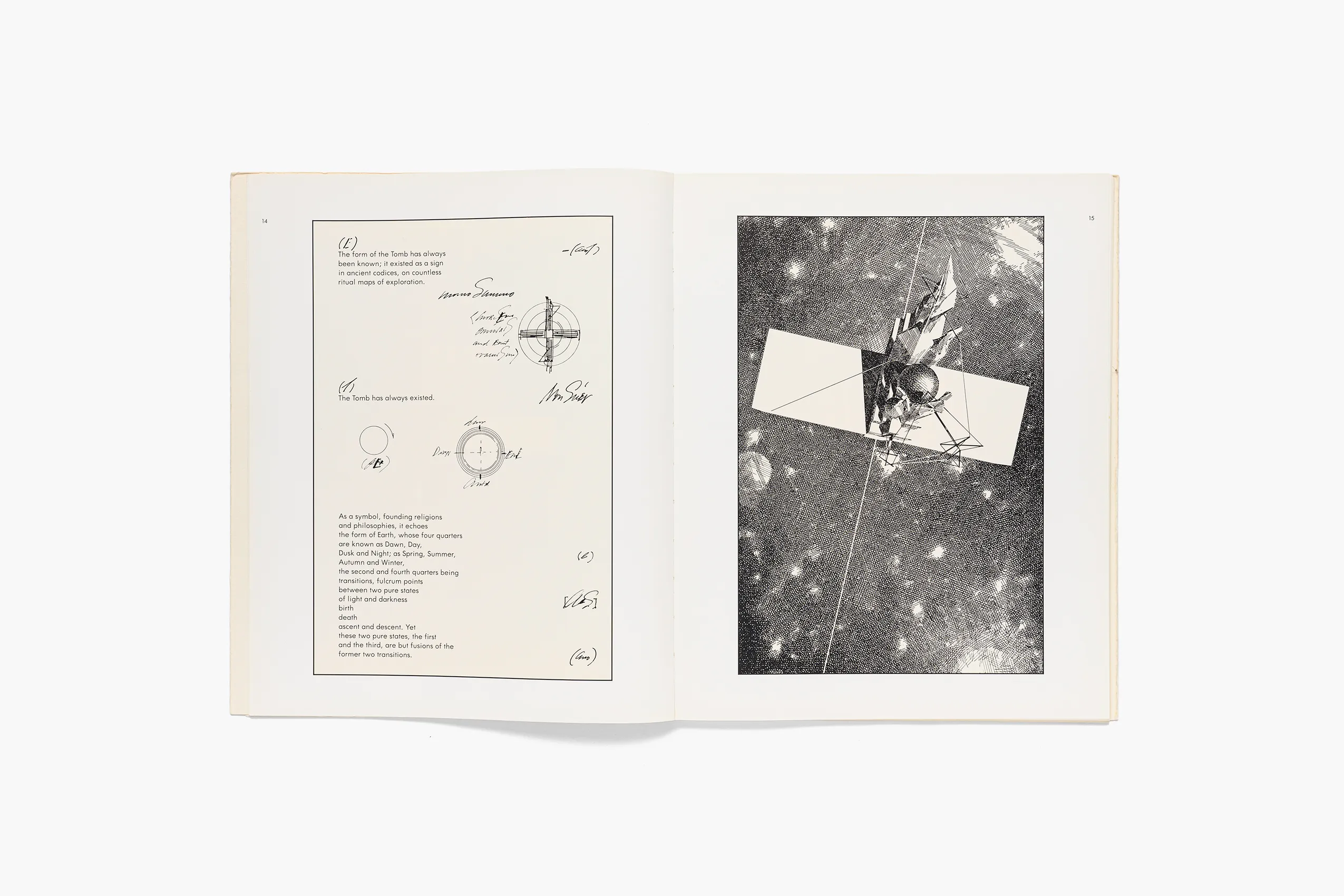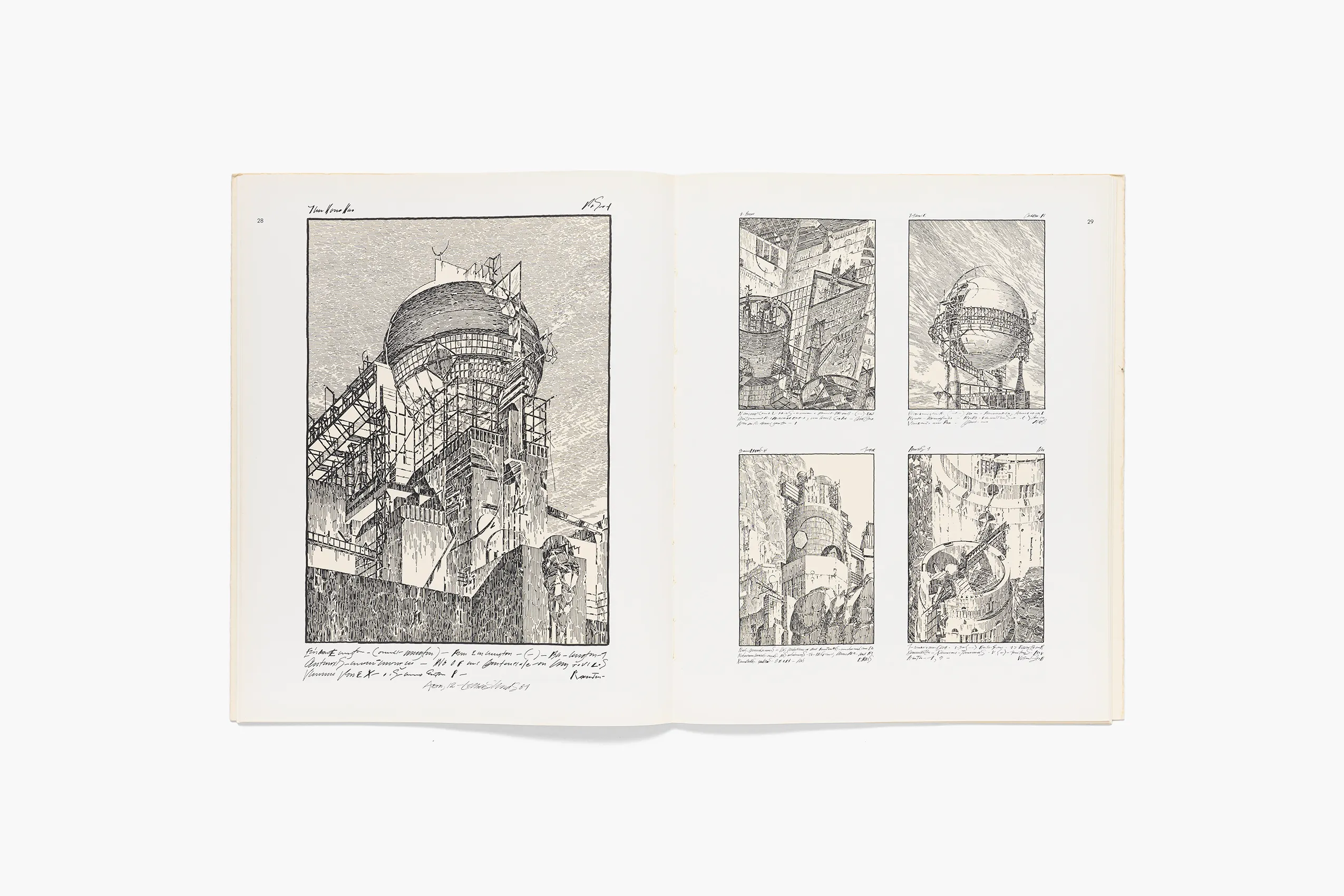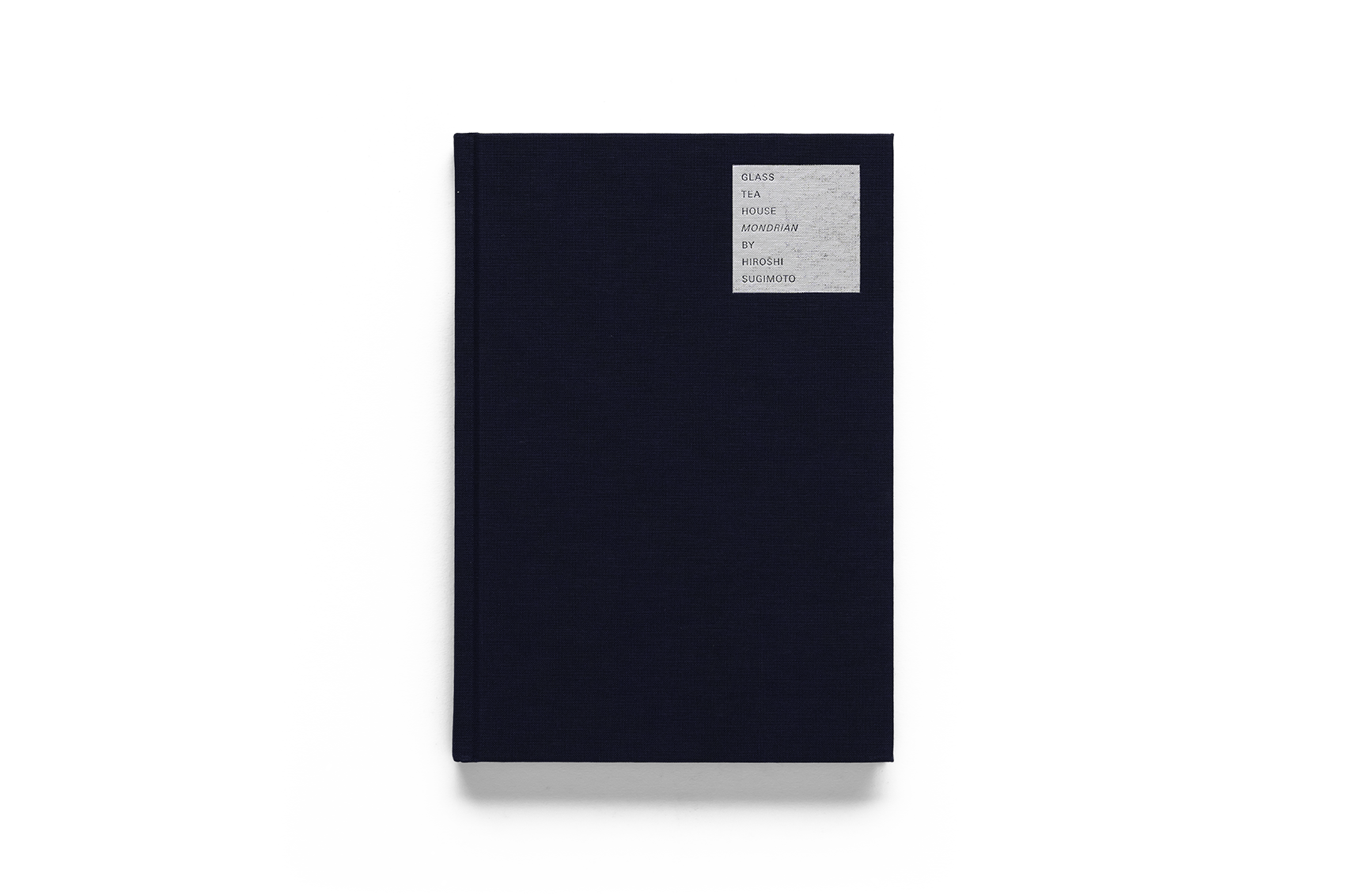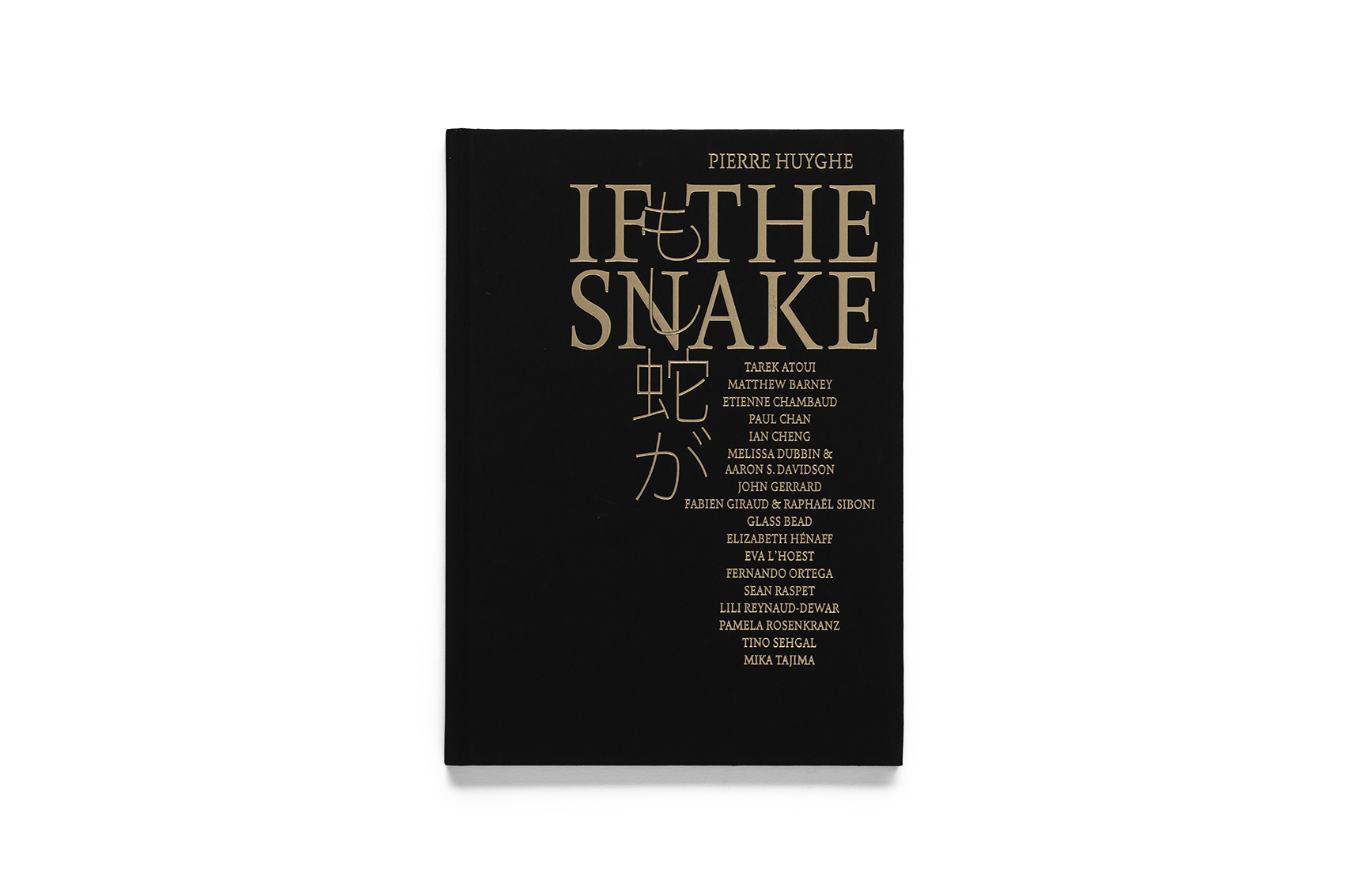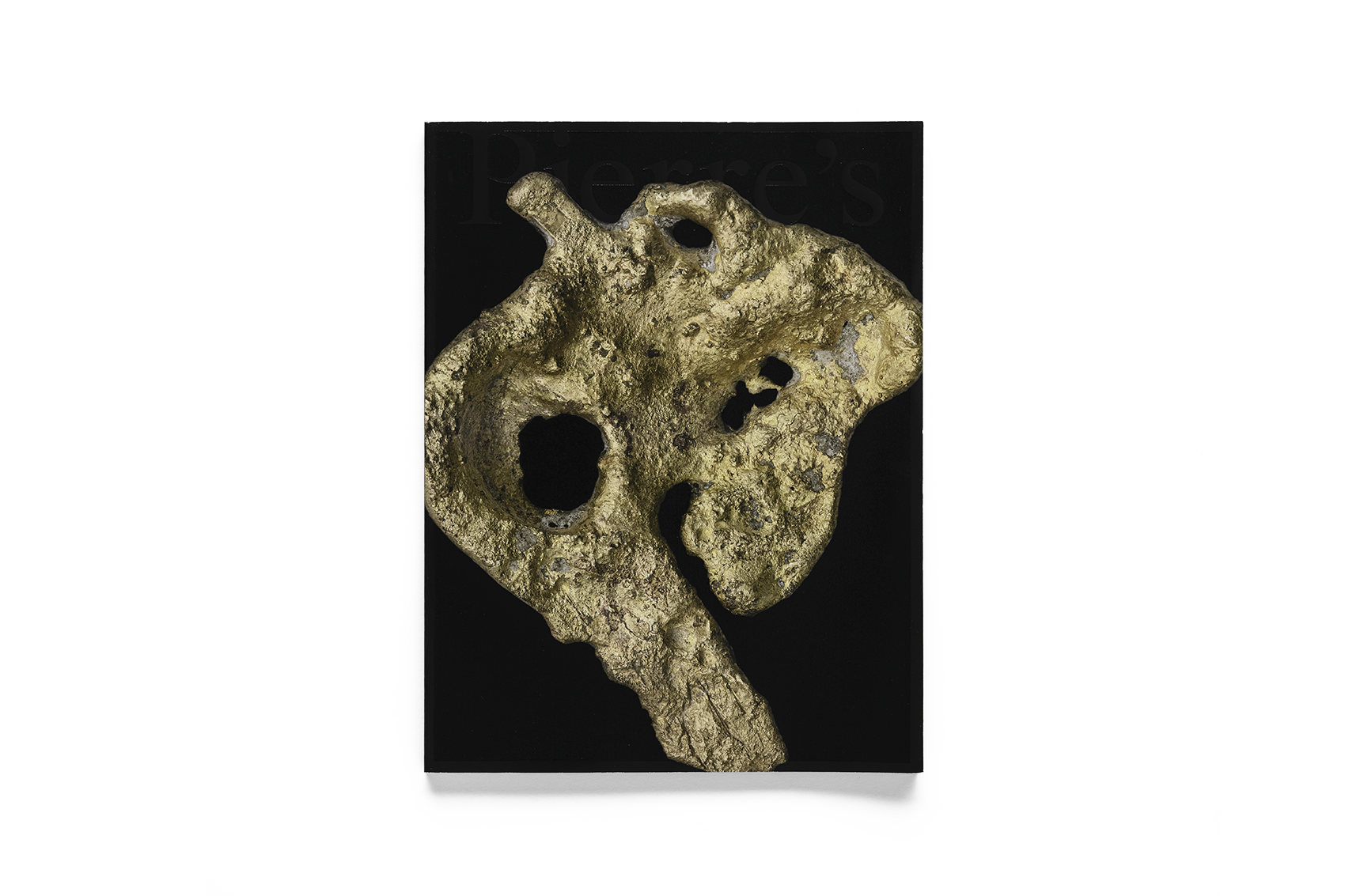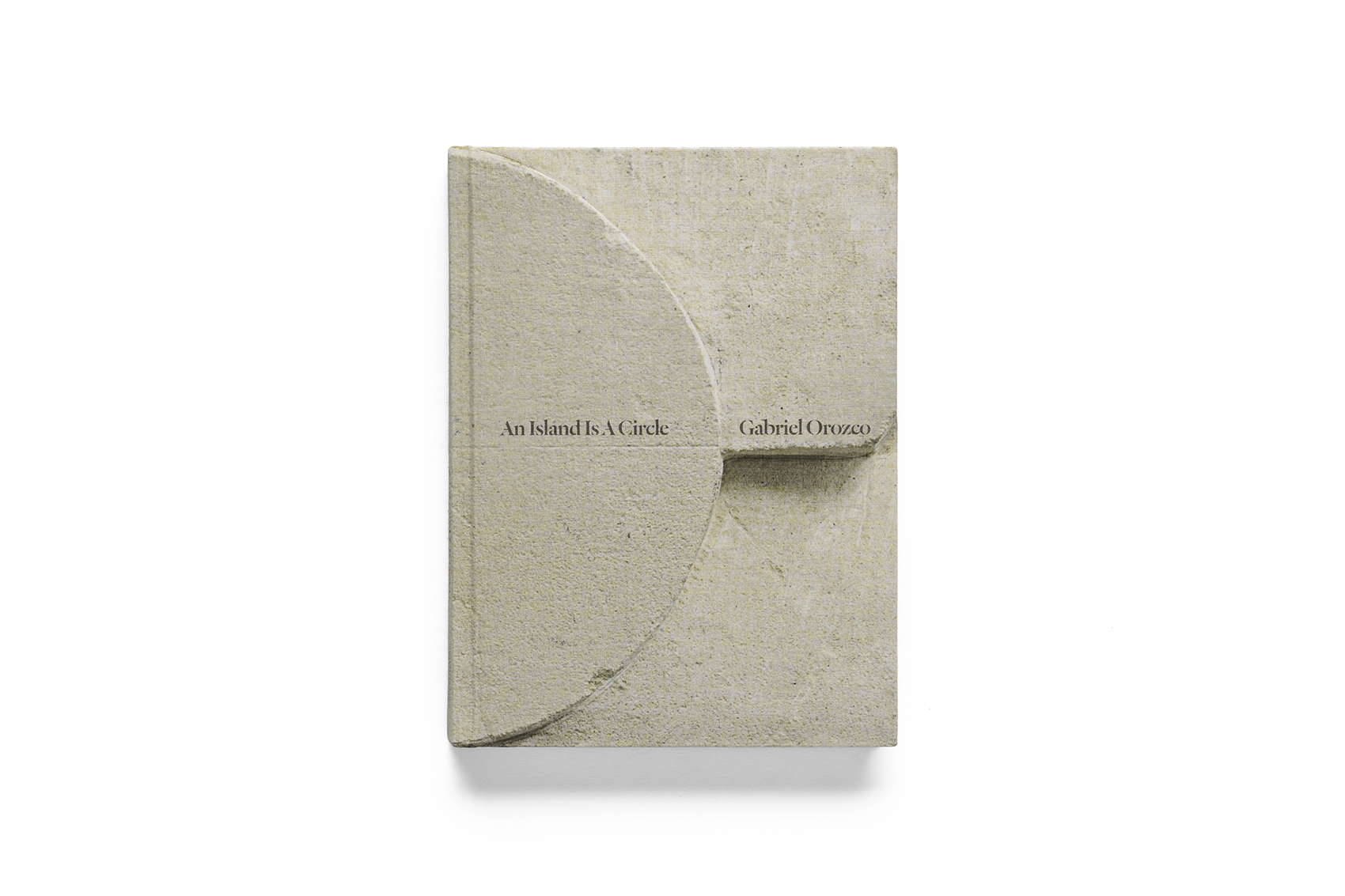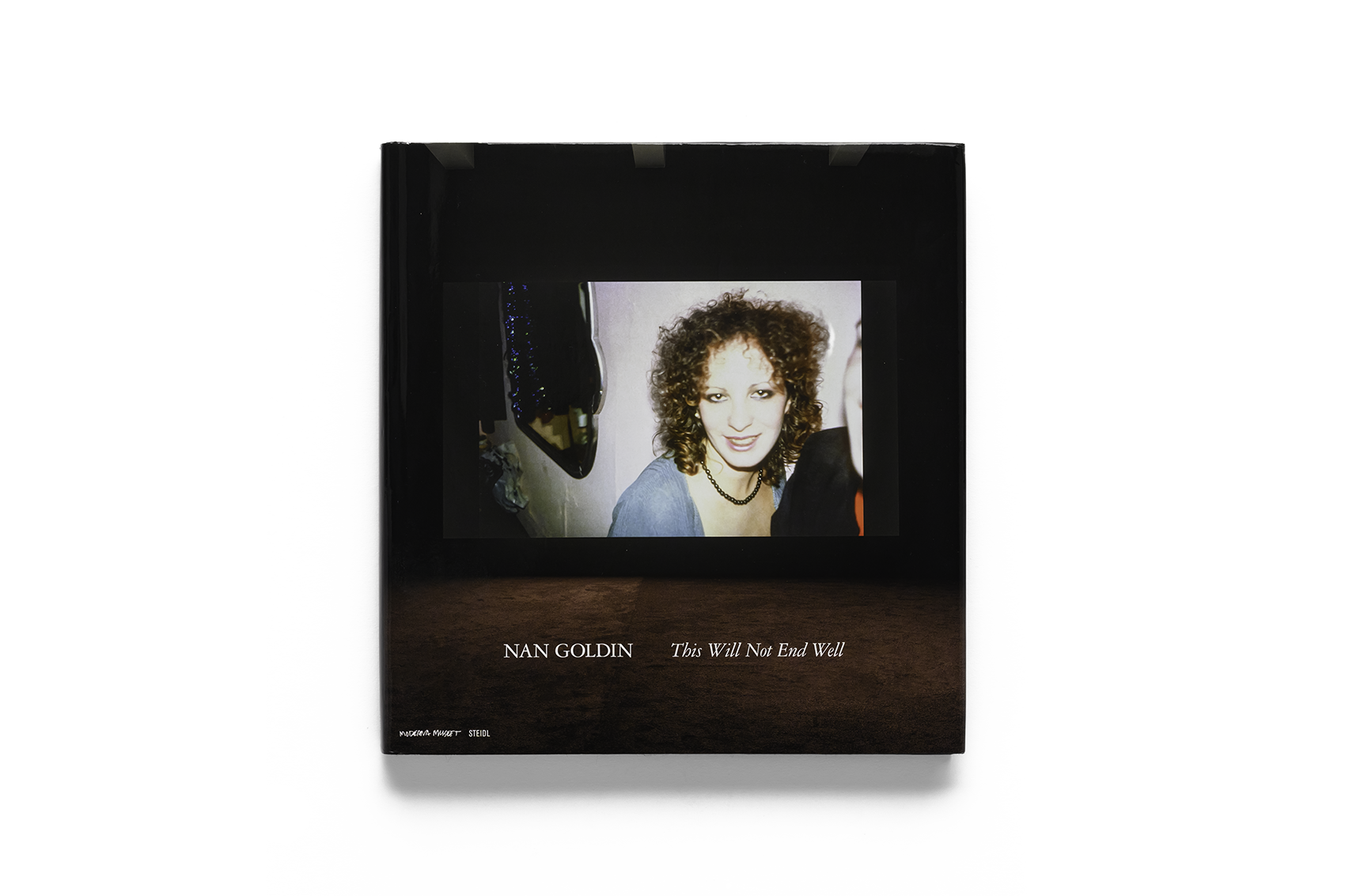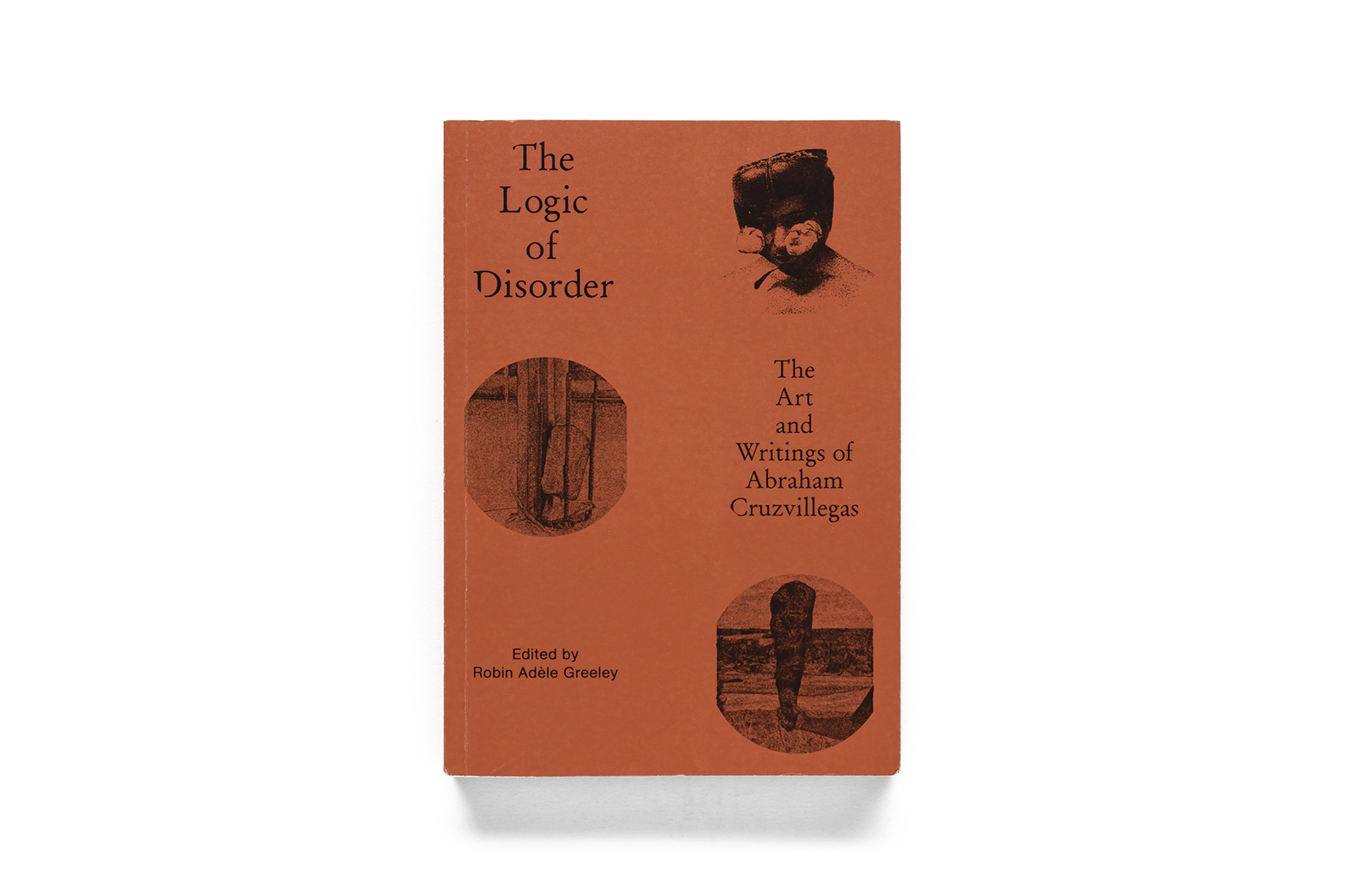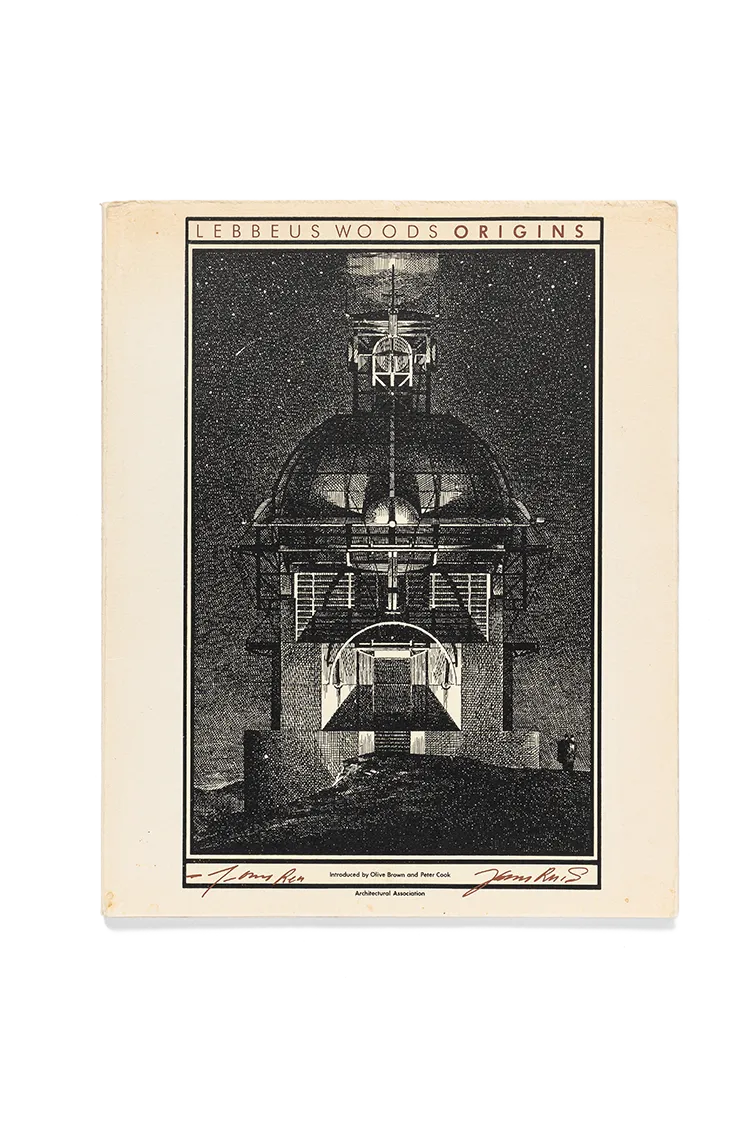
Architectural Association, 1985
Lebbeus Woods: Origins
Lebbeus Woods: Origins

Architectural Association, 1985
“His cities can simultaneously gyrate and evoke a stillness: or simultaneously offer dreamed-of futures and suggest almost forgotten ruins.”
Peter Cook, Lebbeus Woods - The Craggy Optimist, Mega II — ORIGINS, pp.2-4
27 September 1985, at the invitation of the American architect Lebbeus Woods, 1940-2012, at the invitation of Zaha Hadid, 1950-2016, with Alvin Boyarsky, president of the Architectural Association, AA, London, 1928-1990 THE SCHOOL EXHIBITED THE THEME “ORIGINS” Phased architectural drawings, original sketches, and design models. “Levius Wootz: Origins” (Lebbeus Woods: Origins) It was an out-of-print edition published with the exhibition at the time, in a large format frame of 35.5 x 27.8 cm. It became the second volume in the AA Important Exhibition Publications Series of the 80's — “Mega”.
The book contains nearly 50 architectural drawings and drafts by Wootts, and is centered around five architectural proposals, including “Einstein Tomb”, “AEON, Four Cities”, “EPICYCLARIUM”, “Center for New Technology”, and “A CITY)”. Wootts's architecture also explores the myths between time, light, matter, and technology and the universe. The cover of which, “The Epicyclarium, Entrance Elevation (Night),” presented on the cover, is a projection of Woots' vision of the spirituality of the architectural space: “I try to build in my imagination Build a building that reflects and absorbs the light of the sun, moon, and stars. The images of these buildings were pioneers in the course of human evolution, bringing together functions such as temples, sacred sites, observatories for religious and scientific purposes, radio stations, and television stations. Wootz hoped that space under this compact dome would be connected to remote and even space through computers and communication devices Together, the rotation of light and energy creates a luminous image that is united with the world.
In “The Thoughts of Levius Wootz”The Mind of Lebbeus Woods) In the article, it is mentioned that Wootz views images that flow onto paper through painting as ideas themselves, rather than just architectural illustrations or reproductions of ideas. Peter Cook (1936), one of the core members of the pioneering architectural group Archigram, describes the creative process that Tswood looks to the future in his book, “The Craggy Optimist”. In Libius Wootz: Origins, the first major review of the architect's collection, we get a glimpse of the origin of spatial imagination behind Wootz's stunning paintings.
